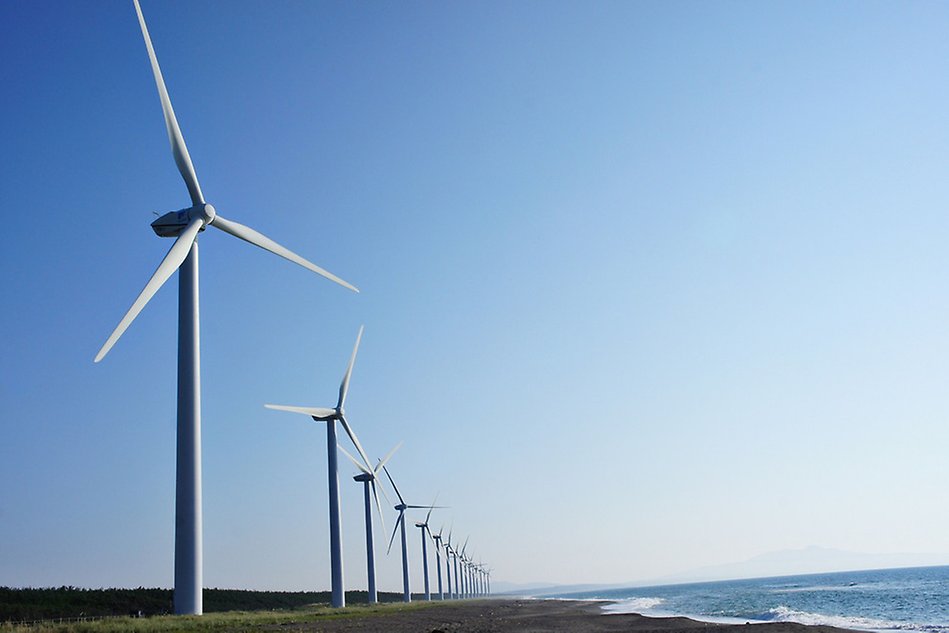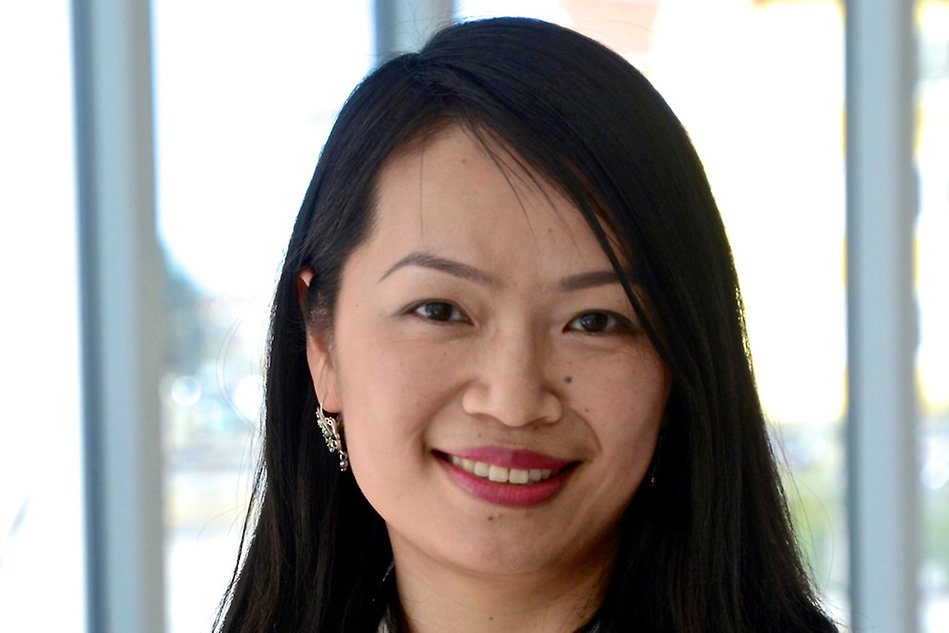International collaboration for sustainable wind power
New research at Halmstad University contributes to cross-continent collaborations and a symbiotic business model. In her thesis, Jasmine Lihua-Liu collaborated with Chinese wind power company Goldwind in order to design a business model that puts the customer’s wants and needs into practice.
”I see myself as a bridge between Sweden, Europe and China.”
Jasmine Lihua-Liu
An invitation to do research
The project is inspired by research concerning company performance in the wind power industry, and because her home country is China, Jasmine Lihua-Liu decided to put her focus there. Contacts and networking led her to the Chinese wind power company Goldwind, where she and her doctoral supervisor professor Mike Danilovic were invited to discuss a problem regarding wind turbine maintenance for customers.
”A wind turbine’s life cycle is about twenty-five years. The first years are within warranty, which means that the producers provide maintenance for free, but out of warranty the owners have to take care of the wind turbines. The problem is that they don’t always know how to do that. That is why Goldwind invited us to help design a new business model”, says Jasmine Lihua-Liu.
.jpg)
Business model innovation project
The visit to Goldwind led to a project aimed at understanding the company’s current business model, focusing on the service and maintenance of wind turbines.
”Together with Goldwind’s team, we held six workshops with different kinds of main customers and stakeholders, asking what barriers they were experiencing and what their ideal business model was. We also interviewed top managers and arranged several internal workshops”, says Jasmine Lihua-Liu.
Jasmine Lihua-Liu was able to identify which parts of the current business model were beneficial and which were not, and from there she and the team designed a business model based on a nine-component model.
About the doctoral thesis
The doctoral defence seminar is held at Halmstad University on September 27, 2019.
A business model for the customers
The outcome was a business model with new stages, mainly focusing on service and maintenance.
”Previously, the business model started with selling wind turbines to customers, but we realised that the life cycle of wind turbines starts at the pre-installation stage. It has to start at the wind farm development stage, together with customers, to find the best place for the turbines and to calculate what kind of wind turbine is most suitable. A lot of preparatory work has to be done at the pre-installation stage”, says Jasmine Lihua-Liu.
In addition to adding a pre-installation stage to the business model, a stage for how to handle wind power turbines at the end of their life cycle was added.
”After the wind turbine finishes the life cycle, there needs to be salvage management, to take the wind turbines down, or extend their life cycle. The whole wind power industry is facing these challenges”, says Jasmine Lihua-Liu.
The salvation stage, like the pre-installation stage, is technically demanding, and customers expect help. Without support, the wind turbines will be left to crumble, and the parts cannot be salvaged.

For the last seven years, Jasmine Lihua-Liu has been dividing her time between her PhD studies at Halmstad University and her work as a lecturer in Marketing at Shanghai Dianji University in China.
International collaboration
Jasmine Lihua-Liu also had a more theoretical approach: seeing how business models work in the Chinese context, and comparing that to the Swedish context. The business model was created for the Chinese market, but when it was finished it was also presented to and discussed with research partner Varberg Energi as a possible business model. The outcome of this has been an international collaboration where the CEO of Varberg Energi visited Goldwind to learn about their work, and the vice president of Goldwind visited Varberg Energi.
“Through this project itself, we designed a new business model for the Chinese company, but the Swedish company also incorporated this new model, showing that it can work in a Swedish context as well. Through this, and by Goldwind’s visit to Varberg Energi, we support international mutual learning, which makes us very happy.”
Research with a positive impact
Goldwind, which is the world’s third largest wind turbine supplier, has implemented the business model to about 80 %, and the local Swedish company Varberg Energi is on its way to doing the same.
”We are very happy to, for the first time, understand what the customers really want. Before, both on the European and Chinese markets, the suppliers did not understand the customers’ wants and needs”, says Jasmine Lihua-Liu.
The research has contributed to creating a business model that will help several businesses in their customer relations. It has also created a collaboration that will benefit not only the people in it, but also the environment.
”My research is focused on the renewable energy industry. Wind turbine service and maintenance is a challenge the whole industry face”, says Jasmine Lihua-Liu
”We are very happy to, for the first time, understand what the customers really want. Before, both on the European and Chinese markets, the suppliers did not understand the customers’ wants and needs.”
Jasmine, Lihua-Liu
Future projects
As a consequence of Jasmine Lihua-Liu’s research, another project including Varberg Energi, Goldwind and Goldwind’s German subsidiary company Vensys has been initiated. The goal is to develop a hybrid energy solution based on solar energy, battery storage and a smart grid system. Jasmine Lihua-Liu is part of the project and hopes it will be a beneficial collaboration for all participants, and for a sustainable future.
”This is pioneering. It is not going to be easy, but it is exciting”, says Jasmine Lihua-Liu.
Jasmine Lihua-Liu plans on continuing her work in the field, and she wants to keep the collaboration she has helped create alive:
”I plan to continue supporting these kinds of collaborative projects between Sweden, Europe and China. I would like to contribute to deepen the understanding of both sides and hopefully improve our collaboration, and as a result, improve our environment. I see myself as a bridge between Sweden, Europe and China.”
Text: Linnéa Andersson
Images: iStock and private


